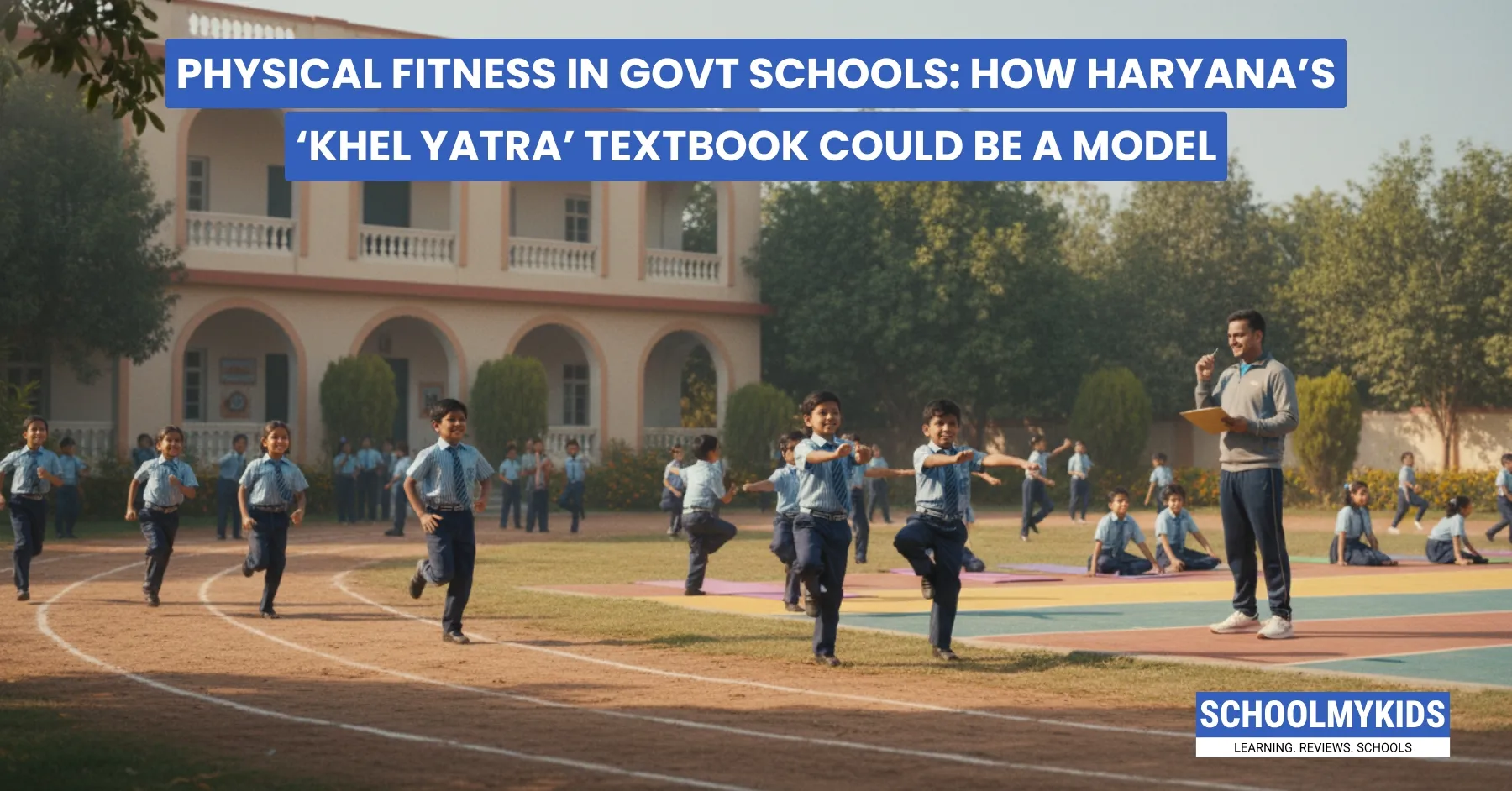Have you ever wondered what goes on in physical education classes in government schools? Is it just a bunch of children playing, or is there a real effort to ensure every child becomes fitter, more skilled, and more aware of health? Haryana’s recent launch of the ‘Khel Yatra’ textbook for Class 6 teachers in government schools marks a major step in redefining how physical fitness is taught and why it matters so much.
Every parent wants their child to be healthy. But with so much focus on exams and studies, fitness often takes a backseat. The Khel Yatra initiative flips this approach by making physical education structured, goal-oriented, and just as important as academics.
What Is Haryana’s ‘Khel Yatra’ Textbook?
The textbook is a first-of-its-kind resource designed not for students directly, but for teachers. Teachers study the book first to understand the latest strategies for teaching motor skills, sports techniques like Kho-Kho and handball, some basic yoga practices, and health awareness. Instead of random playtime, teachers follow a set of five planned activities, from introducing organized physical education to improving motor efficiency, basic sports skills, and yoga sessions.
This careful planning means every child gets a chance to develop core fitness skills, teamwork, and awareness about their own health, all in a supportive, non-judgmental classroom.
Why Is This Important?
- Most kids in India don’t get enough exercise. Academic pressure, lack of space, or not knowing the right way to exercise can all stand in their way.
- Many government schools treat PE as ‘free playtime,’ not a subject with real goals. That leaves students behind when it comes to building endurance, strength, and learning sports.
- The Khel Yatra book makes physical education equal to all other subjects. It gives clear guidance so all teachers, regardless of their own training, can help kids be healthy and active.
The NEP (National Education Policy) 2020 backs this up. It wants every school in India to focus not just on marks, but on holistic development, meaning fitness, mental health, creativity, and more.
What Does the Khel Yatra Textbook Cover?
- Motor skills: Building strength, speed, flexibility, and balance through planned exercises.
- Sports Techniques: Learning rules and basics of Indian team games like Kho-Kho and international sports such as handball.
- Yoga: Introducing kids to breathing exercises, simple postures, and relaxation for both mental and physical wellness.
- Health awareness: Tips and discussions on keeping fit, eating well, and looking out for one another.
Teachers use these lessons to create a classroom where all kids, regardless of ability, feel welcome and encouraged to join in. The aim is not just to produce athletes, but to nurture healthier, happier children.
How Will This Help Students and Parents?
Parents often worry about their kids sitting too much, falling sick, or not getting enough physical activity. The Khel Yatra model gives parents confidence that every child has a chance to exercise, learn team values, and understand their own body and mind.
Children who are active, especially through guided sports and yoga, don’t just stay fit; they can concentrate better, perform well in studies, and grow up with stronger self-esteem. They also learn the joy of movement, teamwork, respect, and fair play; all lessons you can’t get from books alone.
Setting an Example for Other States
Haryana’s model could inspire other states to craft similar curriculum-based physical education programs. By making PE official, organized, and teacher-driven, schools everywhere can help build a generation that values health and not just grades.
If you’re a parent or a teacher, ask your school about how physical education is taught. Are there textbooks, planned activities, and real goals? If not, Haryana’s Khel Yatra might just be the inspiration needed to push for change.
Physical fitness is not an extra; it’s at the heart of every child’s growth. Haryana’s Khel Yatra is proof that with the right intent and strategy, our schools can help every child flourish, inside and outside the classroom.








Be the first one to comment on this story.